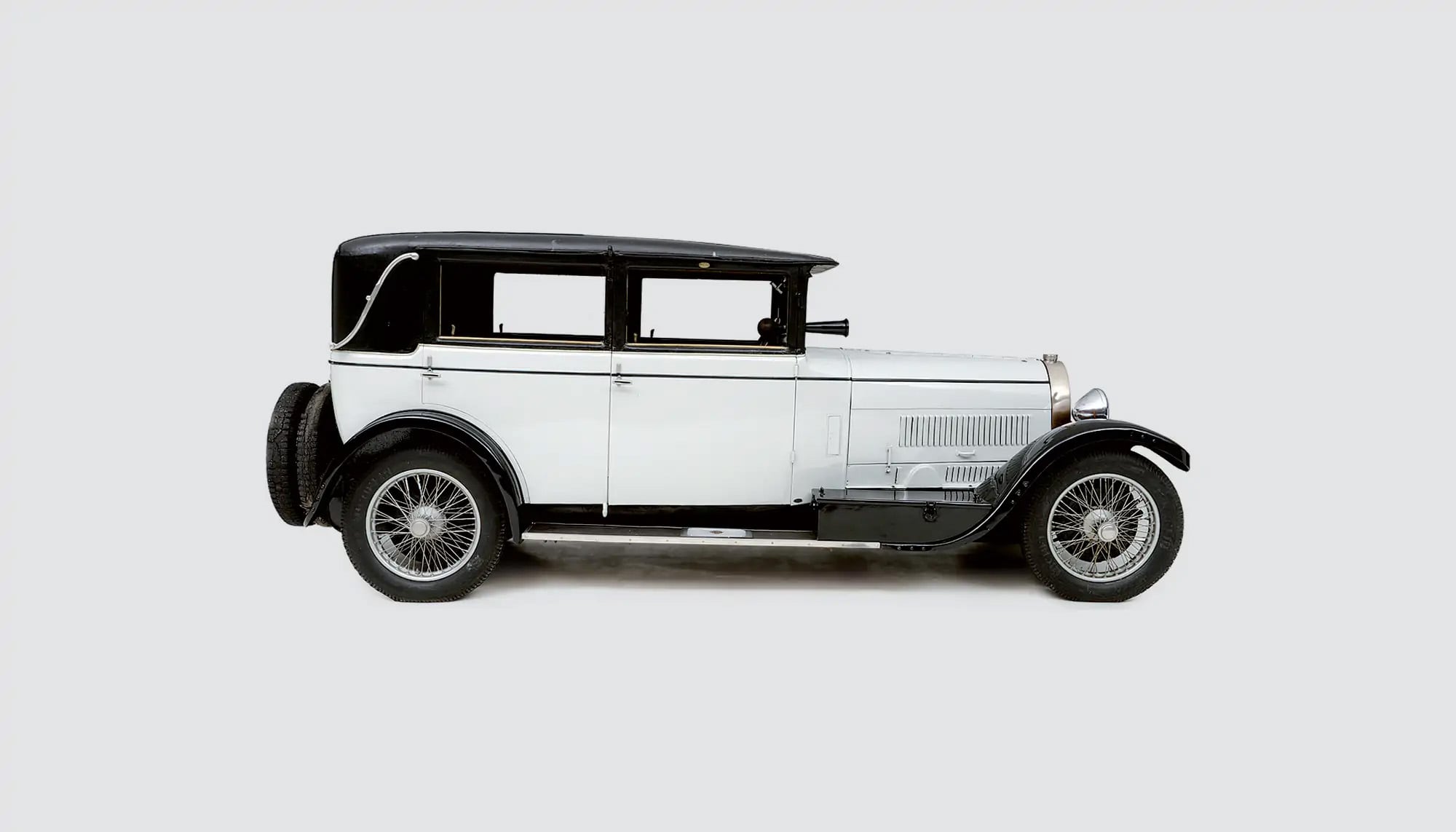Bugatti Type 44
For a Bugatti, this car has a rather conservatively styled body, but that is what makes it special. The bodywork is by Bergeon & Descoins of Bordeaux, a company that had been building coachwork since 1830.
This body style is called a ‘faux cabriolet’, a ‘fake’ cabriolet. The roof cannot be lowered although the darker colour gives that impression, and the hood irons were added purely for decorative purposes.
Despite the restrained bodywork, the car should not be underestimated: it is equipped with a powerful 3.0-litre, eight-cylinder engine. The upholstery of this Bugatti is completely original.
Ettore Bugatti was born into an artistic Italian family in 1881. He attended the Academy of Fine Arts of Brera, Italy with his brother Rembrandt, but soon decided he wanted to go into engineering instead. He left the academy and worked for various bicycle and car manufacturers before setting up his own motorcar factory in Molsheim, Alsace, in France in 1909. The first car he built was the Type 13, fitted with a 1.3-litre, four-cylinder engine with overhead camshaft. He also designed the Peugeot Bébé. In 1913 he built his first eight-cylinder engine by connecting two four-cylinder blocks.

